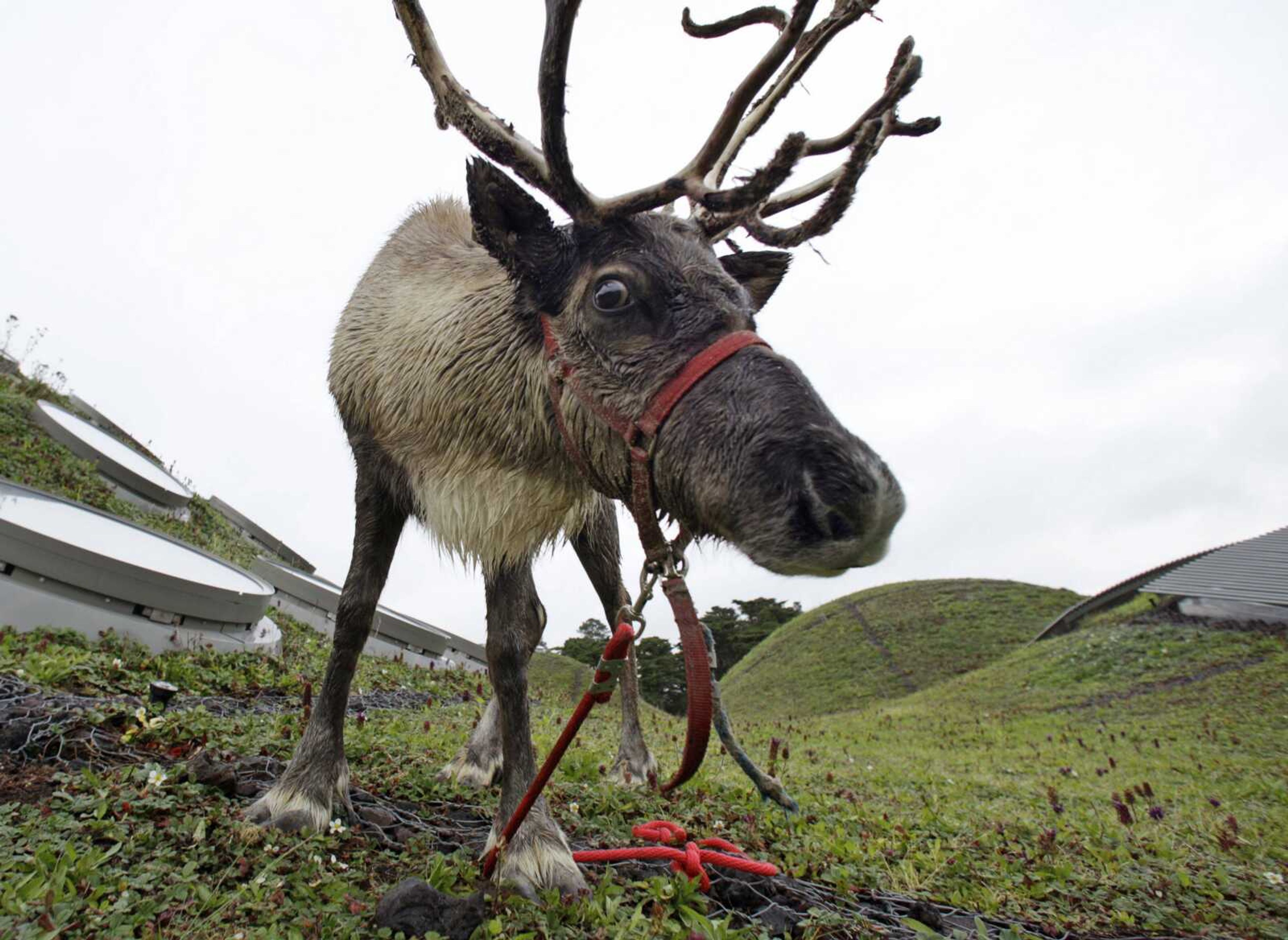Rudolph's shiny red nose may be tied to eyes that glow blue
CONCORD, N.H. -- Everyone knows Rudolph has a red nose, but what about his eyes? Prompted by questions from his 4-year-old daughter, Dartmouth College anthropology professor Nathaniel Dominy wrote a scholarly paper on how the unique properties of reindeer eyes might explain the advantage of having a very shiny nose, particularly if it produces red light...
CONCORD, N.H. -- Everyone knows Rudolph has a red nose, but what about his eyes?
Prompted by questions from his 4-year-old daughter, Dartmouth College anthropology professor Nathaniel Dominy wrote a scholarly paper on how the unique properties of reindeer eyes might explain the advantage of having a very shiny nose, particularly if it produces red light.
Dominy, who specializes in primate vision, already was familiar with recent research on reindeer eyes when his daughter asked him about Rudolph's nose.
Scientists in Great Britain discovered unlike most mammals, reindeer can see ultraviolet light, meaning white polar bears or wolves that absorb UV light would stand out more against a snowy background.
Reindeer eyes also include reflective tissue that appears to glow when light hits it -- familiar to anyone who's seen a pet or wild animal illuminated by car headlights.
But in reindeer, the tissue changes from a golden color during the summer to a deep blue in winter.
"What happens is that at night, the animals are trying to dilate their pupils to allow as much light into the eye as possible, and because those muscles are so active, it actually blocks little valves in the eye," Dominy said. "The pressure in the eye builds up and compresses that tissue in the back of the eye, which causes the refractive properties to change."
While that change could boost an animal's ability to spot food in the snow when daylight in the Arctic is dim and purplish, it would be a disadvantage on a foggy Christmas Eve, because fog blocks blue light, Dominy said.
Enter the red nose.
Of all the colors, red light travels through fog fastest, making it ideal for guiding Santa's sleigh. But there's a downside to red noses, he warned.
Other researchers have discovered reindeer noses have a complex system of tiny blood vessels that prevent them from freezing but results in a loss of body heat.
"That's bad. You want to retain as much heat as possible. If Rudolph has a very bright, glowing nose, he must have an unusually rich microvascular system, and he's probably losing a ton of heat through his nose," he said. "So Rudolph, more than other reindeer, is probably risking his life by losing so much heat."
His suggestion? Skip the carrots on Christmas Eve and leave Rudolph some cookies instead.
"One way to heat your body is to burn fuel. You do that by burning fat and calories," he said. "Children should be aware of Rudolph's condition and leave high-calorie foods for him."
At the Santa's Village amusement park in New Hampshire, Jim Miller said Tuesday he was unaware reindeer had such unusual eyesight, and he chuckled when he heard about Dominy's conclusions. The park has a herd of about three dozen reindeer.
"I think that theory is quite good, and as anyone will notice when they visit Santa's Village, Rudolph is indoors for us, because we're sensitive to that issue of him losing heat through his nose," said Miller, who gave his title as "Santa's Helper."
Dominy's paper, published by Frontiers for Young Minds, adds to Dartmouth's special connection to the Christmas story. Rudolph first appeared in a 1939 book written by advertising copywriter and Dartmouth alumnus Robert L. May to drive traffic to Montgomery Ward stores. May later left Montgomery Ward to essentially manage the reindeer's career, which took off after brother-in-law Johnny Marks wrote the song (made famous by Gene Autry in 1949), and the release of a stop-motion animated television special in 1964.
Connect with the Southeast Missourian Newsroom:
For corrections to this story or other insights for the editor, click here. To submit a letter to the editor, click here. To learn about the Southeast Missourian’s AI Policy, click here.









